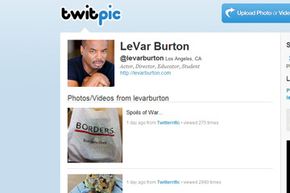Originally, Twitter was all about the 140 characters, which you could use as you saw fit to describe what you were doing at any given moment. But why not share a photo at the same time? About two years after Twitter's inception, Twitter user (and self-taught Web developer) Noah Everett wanted to be able to quickly and easily share photos directly on his Twitter feed, but he couldn't locate another service that would let him do so. Everett had an unused server that he'd been using for a different photo-sharing Web site that he created, and in a weekend, he figured out how to alter the existing code to make it work with Twitter. It didn't take long for Twitpic to spread and slowly become the most popular photo-sharing service for Twitter. It's been a lucrative business for Everett -- Now Twitpic is an Alexa Top 100 Website and generates more than $1 million in advertising. In 2010, Everett was offered eight figures to sell the company (which he refused) [source: Mixergy].
Although it was designed to work with Twitter, Twitpic is completely separate from the microblogging service, both as a company and a Web site. Images that you upload reside on one of Twitpic's servers, and you could use Twitpic just like any other photo-sharing service if you wanted to (but why would you?). When you make a Twitpic account, you're logging in to Twitter. Photos are Tweeted by way of a short URL, which your followers click on to view the image. They can then make comments on your pictures, which appear on their Twitter feeds as a reply Tweet. It's a simple concept that has really caught on.
Advertisement
Excited by the idea of sharing photos through Twitpic? Find out how you can do so from your phone or computer on the next page.

